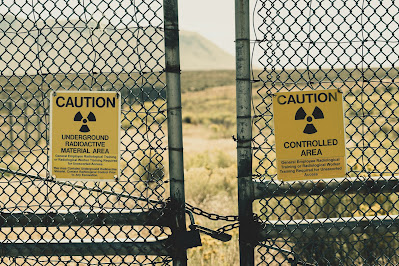Featured
- Get link
- X
- Other Apps
The search for exoplanets and the possibility of habitable worlds
The search for exoplanets and the possibility of habitable worlds
INTRODUCTION
The search for exoplanets, or planets outside our solar system, has been one of the most exciting and rapidly developing fields in astronomy over the past few decades. The discovery of exoplanets has opened up a new frontier in our understanding of the universe and has raised the possibility of finding habitable worlds beyond our own. In this article, we will explore the search for exoplanets, the methods used to detect them, and the prospects for finding habitable worlds.
DETECTION METHODS
There are several methods used to detect exoplanets, including the radial velocity method, the transit method, and the direct imaging method.
The radial velocity method involves measuring the wobble of a star caused by the gravitational pull of an orbiting planet. As the planet orbits the star, it causes the star to move slightly back and forth, which can be detected by observing the star's spectrum. This method is most effective for detecting large planets that are close to their stars.
The transit method involves measuring the slight dip in a star's brightness as a planet passes in front of it. By observing the periodic dimming of the star's light, astronomers can determine the size and orbital period of the planet. This method is most effective for detecting planets that are close to their stars and have large radii.
The direct imaging method involves taking a picture of the planet itself. This method is most effective for detecting large, bright planets that are far from their stars. However, it is also the most difficult method, as the planet's light is often overwhelmed by the light of its star.
HABITABLE WORLDS
The discovery of exoplanets has raised the possibility of finding habitable worlds beyond our own. A habitable world is one that has the right conditions to support life as we know it. This includes a stable climate, liquid water, and a suitable atmosphere.
One of the most promising candidates for a habitable world is Proxima Centauri b, a planet that orbits the closest star to our own, Proxima Centauri. This planet is roughly the same size as Earth and orbits in the star's habitable zone, where temperatures are just right for liquid water to exist on its surface.
Another promising candidate is TRAPPIST-1e, a planet that orbits a small, cool star called TRAPPIST-1. This planet is also roughly the same size as Earth and orbits in the star's habitable zone. In fact, the TRAPPIST-1 system has several planets that are potentially habitable.
However, it is important to note that just because a planet is in the habitable zone does not mean it is habitable. Many factors, such as the planet's atmosphere and magnetic field, can affect its ability to support life.
CONCLUSION
The search for exoplanets and the possibility of habitable worlds is an exciting and rapidly developing field in astronomy. With the discovery of new exoplanets and the development of new detection methods, we are getting closer to answering one of the most fundamental questions in science: are we alone in the universe? While we have not yet found definitive evidence of life beyond our own planet, the discovery of habitable worlds raises the possibility that we may one day find it.
Popular Posts

Why are Memories Forgotten?
- Get link
- X
- Other Apps

How is the Colour of a Lobster Determined?
- Get link
- X
- Other Apps

Can Sound Waves Solve Plastic Pollution?
- Get link
- X
- Other Apps

Can Animals Recognise Human Faces?
- Get link
- X
- Other Apps

Is the Earth Spinning Faster?
- Get link
- X
- Other Apps

Do plants sleep? The surprising science of sleep in the plant kingdom
- Get link
- X
- Other Apps

Can Bad Times Actually Improve Your Life? Surprising Benefits of Adversity
- Get link
- X
- Other Apps

Can Brain Implants Make You More Powerful?
- Get link
- X
- Other Apps

The Future of Space Tourism and Its Impact
- Get link
- X
- Other Apps

The Future and Potential of Nuclear Batteries
- Get link
- X
- Other Apps
Popular Posts

Why are Memories Forgotten?
- Get link
- X
- Other Apps

How is the Colour of a Lobster Determined?
- Get link
- X
- Other Apps

Can Sound Waves Solve Plastic Pollution?
- Get link
- X
- Other Apps

Can Animals Recognise Human Faces?
- Get link
- X
- Other Apps

Comments
Post a Comment